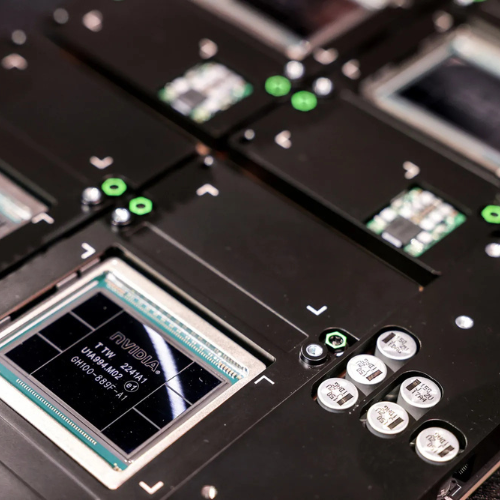In a surprising twist, reports have revealed that Russia is finding clever ways to acquire advanced computer chips, specifically from companies like Nvidia and AMD, by using Dell servers shipped from India. This situation highlights how nations can bypass restrictions imposed on them, raising concerns about international trade and security.
The Sanctions Background
Since Russia invaded Ukraine in 2022, many countries, including the United States and members of the European Union, have imposed strict sanctions on Russia. These sanctions aim to limit Russia’s access to important technology that could help its military. Specifically, they target “dual-use” goods—items that can be used for both civilian and military purposes.
These restrictions are meant to prevent Russia from getting high-tech equipment that could enhance its military capabilities. However, despite these efforts, Russia has been finding ways to get around the sanctions and obtain the technology it needs.
How Russia Acquires High-Tech Chips
One of the methods Russia is using involves a mid-sized Indian company named Shreya Life Sciences. This firm, which originally focused on pharmaceuticals, has recently turned its attention to technology exports. Between April and August 2024, Shreya Life Sciences exported over a thousand Dell PowerEdge XE9680 servers to Russia. These servers are not just regular computers; they come equipped with powerful processors and graphics chips.
The servers, worth around $300 million, were shipped to two Russian companies. Each server contains advanced components, such as 4th-generation Intel Xeon processors and either Nvidia H100 or AMD Instinct MI300X accelerators. These components are optimized for artificial intelligence, making them very valuable in today’s tech-driven world.
This is important because these chips are precisely the type of high-tech items that the sanctions aim to restrict. By purchasing these servers through an Indian company, Russia is cleverly navigating the restrictions.
The Complex Supply Chain
The story doesn’t end with the Indian company, though. The Dell servers sent to Russia actually originated from Malaysia. Before they reached India, many of these servers were shipped from Malaysia to India, and then from India to Russia. This complicated supply chain shows how technology can move across borders in unexpected ways, making it harder for sanctions to be enforced.
Indian Drugmaker’s Shocking Role in Supplying Nvidia Chips to Sanctioned Russia
In India, Shreya Life Sciences legally exported these servers under the country’s trade regulations. India has not followed the sanctions set by the United States and the European Union, which has allowed Russian companies to continue acquiring technology through Indian intermediaries. India maintains a significant relationship with Russia, especially concerning military supplies and energy resources.
Shreya Life Sciences is not new to this type of business. Founded in Moscow in 1995, the company started by distributing medicines before moving into manufacturing its products. Since the start of the war in Ukraine, Shreya has also been involved in exporting non-medical goods, such as computer hardware. This includes earlier shipments made to a Russian company called Lanprint, which has since been added to the U.S. sanctions list.
The report reveals that between January 2022 and August 2024, Shreya Life Sciences sold $22 million worth of pharmaceuticals to Russia. In contrast, its tech exports began in September 2022, marking a shift in the company’s focus toward technology that could be vital for Russia’s military and industrial needs.
The Global Context
This situation highlights a larger trend where countries, especially India and China, are stepping in to fill the gaps left by Western sanctions. India has become the second-largest supplier of restricted technology to Russia, just behind China. In recent years, reports have suggested that Russia has also been sourcing chips from the Chinese gray market. This is a risky endeavor since many of these chips have been found to be defective, making it a gamble for the Russian military and tech sectors.
Moreover, China itself faces U.S. sanctions on certain technologies. However, Chinese entities have also found ways to obtain high-end Nvidia products by purchasing servers embedded with these chips from other sources. This means that despite efforts to enforce sanctions, the global technology supply chain remains complex and interconnected.
In summary, Russia’s strategies to acquire advanced technology by bypassing sanctions pose significant challenges for international trade and security. The case of Shreya Life Sciences illustrates how businesses can operate across borders, making it easier for countries under sanctions to access essential technology.


